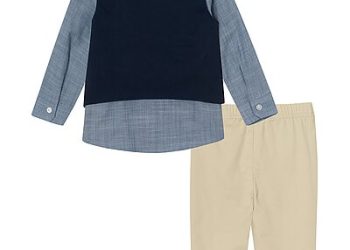Food packaging plays a pivotal role in preserving the quality and safety of food products. However, the conventional methods of packaging often contribute to environmental degradation and waste accumulation. In recent years, there has been a growing recognition of the need to adopt sustainable practices in food packaging to mitigate these negative impacts. This article explores the innovations and challenges associated with sustainable food packaging.
Introduction to Food Packaging
Food packaging serves multiple purposes, including protection, containment, and communication. It not only safeguards food from physical, chemical, and biological hazards but also provides consumers with essential information such as ingredients, nutritional value, and expiration dates. Additionally, packaging plays a crucial role in marketing and brand identity.
The Need for Sustainable Food Packaging
Traditional food packaging, predominantly made from plastic and other non-biodegradable materials, poses significant environmental challenges. The accumulation of plastic waste in landfills and oceans has spurred concerns about pollution and ecosystem damage. To address these issues, there is a pressing need to transition towards sustainable alternatives that minimize environmental impact throughout the packaging lifecycle.
Innovations in Sustainable Food Packaging
In response to the growing demand for eco-friendly solutions, numerous innovations have emerged in the field of sustainable food packaging. Biodegradable materials, such as polylactic acid (PLA) and bio-based plastics, offer viable alternatives to conventional plastics. Compostable packaging, made from organic matter like cornstarch or sugarcane, provides a sustainable end-of-life option by breaking down into natural components. Plant-based alternatives, such as cellulose-based materials or mushroom packaging, offer renewable and biodegradable options for packaging applications.
Furthermore, advancements in recyclable materials, such as PET and HDPE, enable the development of packaging that can be efficiently recycled and reused. Active and intelligent packaging technologies, incorporating functionalities like oxygen scavenging or freshness indicators, extend the shelf life of food products and reduce food waste.
Challenges in Implementing Sustainable Food Packaging
Despite the promising innovations, several challenges hinder the widespread adoption of sustainable food packaging. Cost considerations remain a significant barrier, as eco-friendly materials often come at a higher price compared to conventional counterparts. Technical limitations, such as barrier properties and shelf stability, pose challenges in developing sustainable packaging solutions that meet the stringent requirements of food safety and preservation. Additionally, consumer acceptance and education play a crucial role in driving demand for sustainable packaging options.
Case Studies of Successful Sustainable Packaging Initiatives
Several companies have demonstrated successful implementation of sustainable packaging initiatives. For example, multinational corporations like Nestlé and Unilever have committed to increasing the use of recyclable and reusable packaging in their product lines. These initiatives not only reduce environmental impact but also enhance brand reputation and consumer loyalty.
The Role of Regulations and Policies
Government regulations and industry standards play a pivotal role in shaping the landscape of sustainable food packaging. Initiatives such as extended producer responsibility (EPR) and product stewardship programs incentivize manufacturers to take responsibility for the end-of-life management of their packaging materials. Additionally, certifications such as the Forest Stewardship Council (FSC) promote the use of sustainably sourced materials in packaging production.
Consumer Awareness and Behavior
Educating consumers about the importance of sustainable packaging is essential for driving demand and influencing purchasing decisions. As consumers become more environmentally conscious, they are increasingly seeking products packaged in eco-friendly materials. Brands that prioritize sustainability and transparency in their packaging strategies are likely to gain a competitive edge in the market.
Future Outlook and Trends
Looking ahead, the future of sustainable food packaging is promising, with continued advancements in materials science, technology, and consumer awareness. Emerging trends such as edible packaging and 3D printing offer exciting possibilities for further innovation and customization. By embracing collaboration and innovation, stakeholders across the food packaging industry can work towards a more sustainable and resilient future.
Conclusion
In conclusion, food packaging plays a critical role in ensuring the safety, quality, and accessibility of food products. However, the environmental impact of conventional packaging practices underscores the urgency of transitioning towards more sustainable alternatives. Through continuous innovation, collaboration, and consumer education, the food packaging industry can pave the way for a more sustainable future.

FAQs
- Why is sustainable food packaging important? Sustainable food packaging helps reduce environmental impact, minimize waste, and preserve natural resources for future generations.
- What are some examples of sustainable packaging materials? Examples include biodegradable plastics, compostable packaging, plant-based materials, and recyclable plastics.
- How can consumers support sustainable packaging initiatives? Consumers can choose products packaged in eco-friendly materials, support brands with sustainable packaging practices, and properly recycle packaging materials.
- What role do regulations play in promoting sustainable food packaging? Regulations and policies incentivize manufacturers to adopt sustainable practices, such as using recyclable materials and reducing packaging waste.
- What are some emerging trends in sustainable food packaging? Emerging trends include edible packaging, 3D printing, and innovative materials that offer enhanced functionality and environmental benefits.




